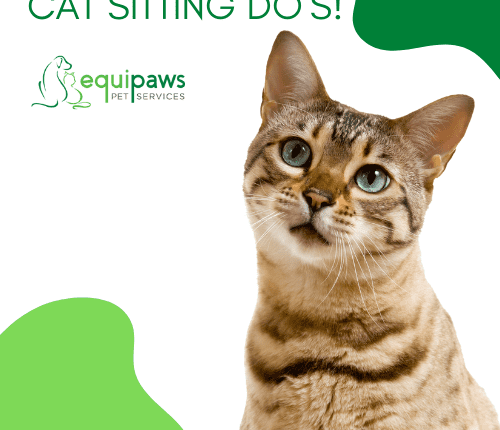Cat Sitting Do’s:
We have a LOT of experience cat sitting in Miami and after lots of exposure to our feline friends, we’ve come up with some important do’s for every cat sitter, cat parent, or cat lover to follow. Cats are often misunderstood not just in the sense that people think they are cold and unaffectionate, but also in the way that many people also think that they can be left alone for long periods of time because they are self-sufficient, that they’re fine to live outside, that they don’t need to visit the vet as much as dogs do. We’re here to help cats out with our cat sitting experiences. Please save and share with your friends!
Cat parenting and cat sitting do’s:
Litter Boxes:
Always have enough litter boxes in your home and monitor them. The rule of thumb is 1.5 litter boxes per cat, so if you have 2 cats, you’d ideally have 3 litter boxes. It helps with territorial disputes and cleanliness. Scoop litter daily to make sure their bowel movements and urine are appropriate.
Play with your cat:
Cats are very interactive and intelligent! Find the right kind of toy for your kitty, be it string, little balls, small stuffed animals stuffed with catnip, or even a laser pointer. When playing with a laser pointer please be sure to have something for your cat to catch at the end of the beam- otherwise laser pointer play can be very frustrating. It could be a toy or a little treat.
Provide plenty of water:
Dehydration is very dangerous for cats. Make sure you have plenty of fresh water around the house, and if you notice that your cats don’t like to drink a lot, add some water to their meals or invest in wet food. A good cat sitter will alert a cat parent if they think a kitty needs more water.
Watch what they eat:
You don’t want your cats to be overweight! We can feed kitties in fun, interactive ways, by placing food around the home, and rolling it across the floor for the kitty to chase, for example.
Always watch kitty body language:
You’ll want to take note of its face/ears, tail, body posture, and sounds kitty makes. This could be its own blog post as a cat is extremely communicative with its mood/thoughts through body language. Like our dog friends, a cat’s body language is quite expressive and indicative of how they are feeling. This is a quick rundown on tail, ear, and body positioning.
Face/Ears:
Facial expressions are very important, in particular alterations in position or movement of the eyes, ears, and mouth.
- Neutral ears: when a cat’s hanging out comfortably, the ears face forward in what’s called the neutral position. Neutral ears indicate that a cat is feeling happy and relaxed and wants to chill out.
- Erect ears and holding them rotated out or backward along with narrow/small pupils usually signals anger and aggression, whereas pupil dilation and ears being held flattened down against the head usually signals fear. The more frightened the cat, the more fearful
- Back and flat against the head: Indicates anxiousness, defensiveness and submission. Lowered ears are a sign of fearfulness. The more flat the ears, the more anxious or fearful the cat is. You want to stay away from her. However, ears laid back but pointing forward are a sign of alertness.
- One ear flattened/rotated: Cats sometimes swivel only one ear indicating confusion. The cat is unsure of how to deal with the situation.
- Low and facing out: In this position, a cat may be signaling that they’re not feeling well. Monitor them for sickness.
- Twitching ears: hunting
Eyes:
- Eye contact can also be important – staring, with little blinking is a challenge, while relaxed eye contact with blinking and winking, sometimes with half-closed eyes, is non-threatening and indicates contentment. Slow blinks are considered kitty “I love yous”- make sure to slow wink back!
Tail:
- Tail standing straight up: it’s a good time to play! Confident, happy.
- Wraps tail around you: friendly greeting
- Thrashing/thumping: it’s irritated
- Tail tip moving: playing, hunting, or a little annoyed (context matters)
- Swishing tail, side to side: it’s hunting or interested in something.
- Quivering: excited to see you/possibly marking
- Wrapped around itself: in pain, not feeling well
- Tail low to the ground/between its legs: in fear or pain
- Puffed up: with an arched back, means frightened/threatened
Body:
- Crouched with tail wrapped around: in fear/pain/not feeling great.
- Arched back, puffed up tail: frightened, might lead to aggressive behavior
Sounds:
There are so many! We’re linking to cat behaviorist site Meowsic so you can listen to the sounds!
We hope this helps- please feel free to add more ideas in the comments section!

A founding member of the Equipaws family, Frankie can mostly be found working behind the scenes, helping co-create online branding, managing several social media accounts, designing brand collateral, writing copy, and managing events. She also fills in for pet sitters and dog walkers when needed in Palmetto Bay, Pinecrest, and South Miami. Her own small pack consists of Boots the Shih Tzu mix and Nutmeg the Chiweenie.

